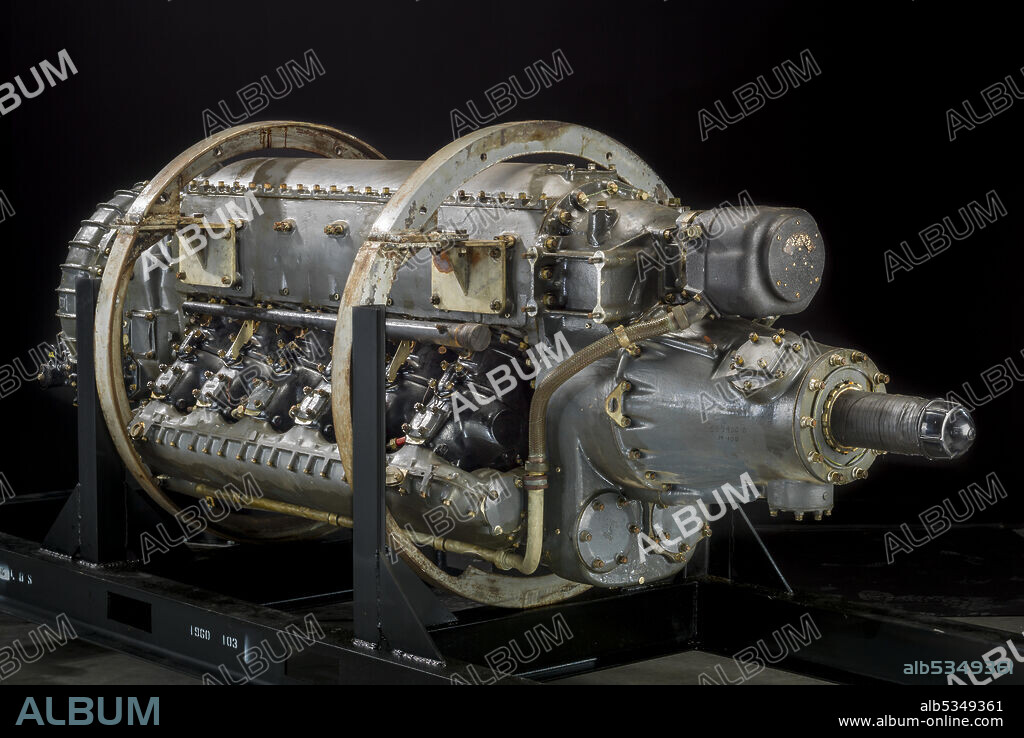alb5349361
CONTINENTAL AVIATION AND ENGINEERING CORPORATION. Continental Hyper I-1430-11, Inverted V-12 Engine,1942. Creator: Continental Aviation and Engineering Corporation.

|
Añadir a otro lightbox |
|
Añadir a otro lightbox |



¿Ya tienes cuenta? Iniciar sesión
¿No tienes cuenta? Regístrate
Compra esta imagen

Título:
Continental Hyper I-1430-11, Inverted V-12 Engine,1942. Creator: Continental Aviation and Engineering Corporation.
Descripción:
Ver traducción automática
In 1932, the Army contracted with Continental for development of a cylinder with high specific power. Using the resulting Hyper No. 1 cylinder, the Air Corps instructed Continental in 1934 to develop what became the horizontally opposed O-1430 to be buried in the wings of large aircraft to improve streamlining for higher speed. However, by this time, the Air Corps decided that 746 kW (1,000 hp) engines were obsolete for bombers, and that fighter wings were too thin for a submerged installation. By 1939, the Air Corps decided that an inverted vee was needed for improved visibility, and instructed Continental to drop the 0-1430 and begin work on the inverted I-1430. Following development problems, it was decided in 1943 that the engine could not possibly be used in the war, and only eight engines were built for experimental use. This Continental I-1430-11 was test flown in a modified Lockheed P-38 testbed aircraft.
Personas:
Crédito:
Album / Heritage Art/Heritage Images
Autorizaciones:
Modelo: No - Propiedad: No
¿Preguntas relacionadas con los derechos?
¿Preguntas relacionadas con los derechos?
Tamaño imagen:
6600 x 4416 px | 83.4 MB
Tamaño impresión:
55.9 x 37.4 cm | 22.0 x 14.7 in (300 dpi)
Palabras clave:
ACERO • ALUMINIO • AMERICA • AMERICANO • AVIACION • AVION • AÑOS CUARENTA • COLOR • CONCEPTO • CONTINENTAL AVIATION AND ENGINEERING CORPORATION • DÉCADA • EDUCACION • ESTADOS UNIDOS DE AMERICA • ESTADOS UNIDOS • GUERRA • LATON • MADERA • MOTOR • NATIONAL AIR AND SPACE MUSEUM • OBJETO • PAÍS • PINTURA • PROPULSION • REFUNDS GUERRA MUNDIAL • SEGUNDA GUERRA MUNDIAL • SIGLO XX • SIGLO • SMITHSONIAN INSTITUTION • TECNOLOGÍA • TEXTIL • TRANSPORTE AEREO • TRANSPORTE • VUELO
 Pinterest
Pinterest Twitter
Twitter Facebook
Facebook Copiar enlace
Copiar enlace Email
Email
